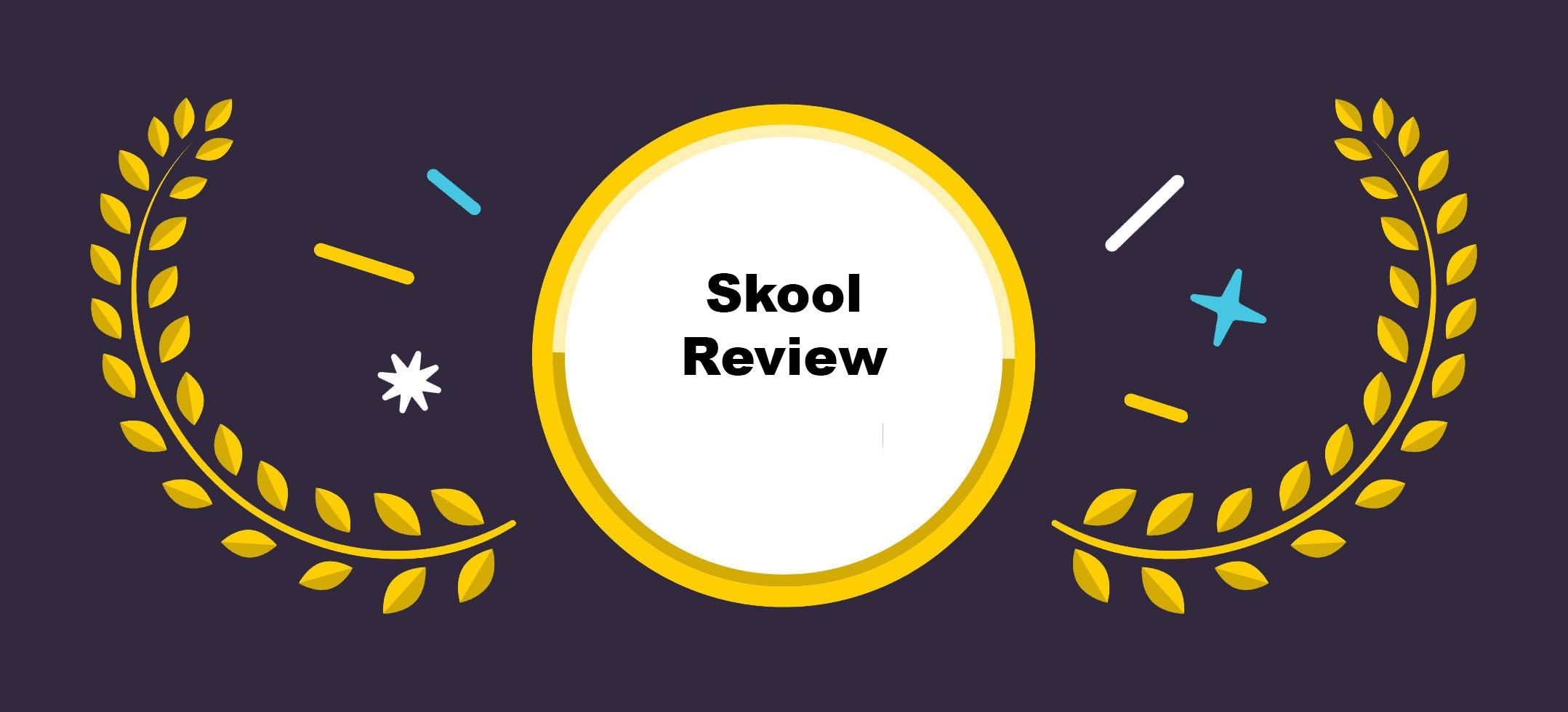I’ve been in eCommerce and online business for over 10 years, testing and scaling different platforms for selling courses, memberships and digital products.
I’ve used Facebook Groups, Kajabi, Discord, Teachable, Mighty Networks and Circle – each with its own pros and cons.
When I heard about Skool, a platform that claims to combine community, courses and gamification all in one, I had to try it.
After several weeks of testing Skool, I found that it’s a clean and distraction free platform for course creators, coaches and entrepreneurs who want to build engaged communities without the hassle of complicated tech or multiple tools. But is it worth $99/month?
Does it really solve the problems other platforms struggle with?
Let’s get into it.
How Skool Works
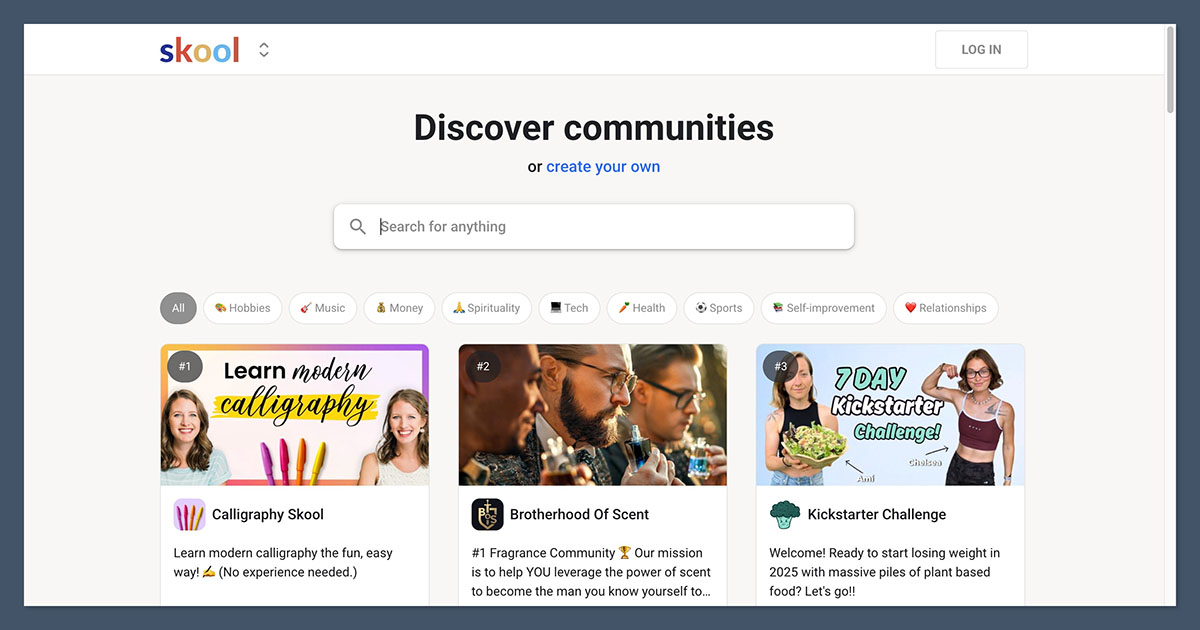
At its core Skool is designed to replace Facebook Groups, Discord and traditional course platforms by being an all in one solution. Instead of having your community in one place, courses in another and payments on a third platform Skool has everything in one place.
1. Community + Courses in One Place
Most platforms force you to choose between course first (like Teachable) or community first (like Circle or Facebook Groups). Skool does both, it integrates both:
- A forum that works like a private Facebook Group (no ads, no distractions, no algorithm issues).
- A course hosting section to upload videos, PDFs and lessons in a structured way.
- A calendar to schedule live coaching calls, Q&A sessions or webinars to keep members engaged.
For people running membership communities or paid groups this is a game changer because members can interact, learn and stay engaged without bouncing between multiple tools.
2. Gamification to Engage
One of Skool’s biggest advantages is its gamification system.
Members earn points by commenting, posting valuable content and participating in activities. This unlocks levels and encourages users to stay active and contribute. The leaderboard feature adds a competitive edge and makes communities more interactive.
Compared to Facebook Groups where engagement dies out after a few weeks, Skool’s built in gamification keeps members engaged for the long term.
3. Flat Pricing Model ($99/month, No Hidden Fees)
Most online course platforms and community tools have complicated pricing structures, charge per user, per feature or take a cut of your sales.
Skool simplifies: $99/month, no matter how many members you have.
- No transaction fees (unlike Teachable that takes a cut).
- Unlimited members & courses (you’re not penalized for growth).
- No forced upgrades or expensive add-ons.
For creators, coaches and community builders this flat pricing makes it easier to scale without hidden costs.
How to Get Started with Skool (Step by Step Guide)
Ready to try Skool and see if it’s for your business? The process is super quick. Unlike other platforms that require complicated setup or technical knowledge, Skool makes it easy to get started in under an hour.
Here’s a step by step guide to set up your Skool community and monetize your courses, coaching or memberships.
Step 1: Sign up for the 14 Day Free Trial
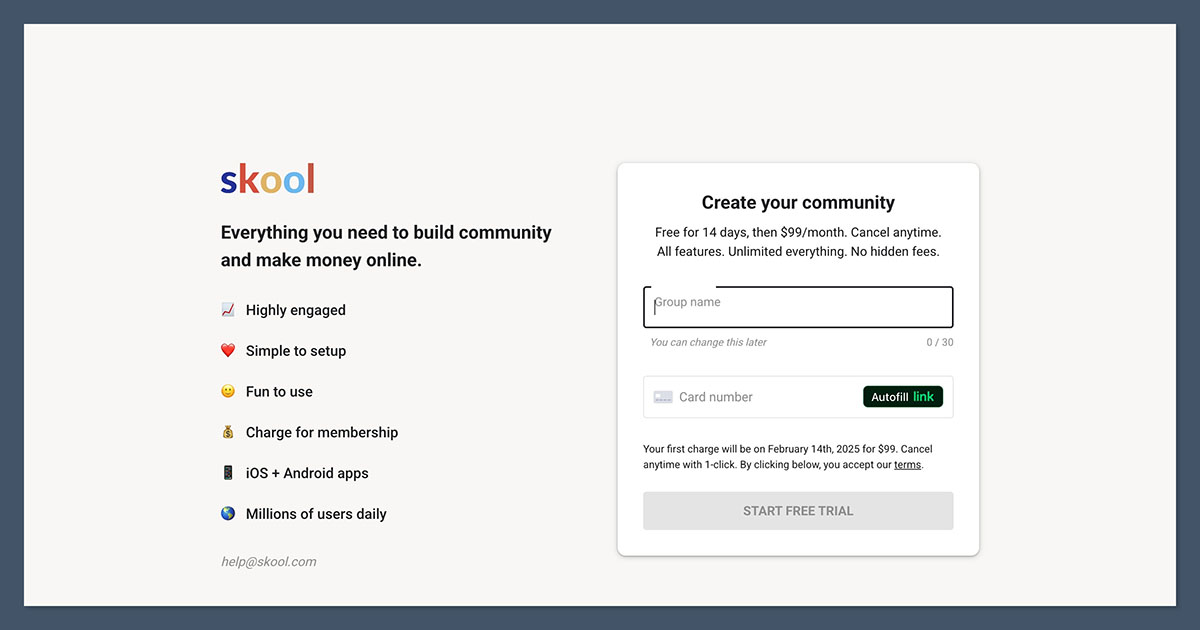
Before committing to the $99/month plan you can try Skool for free for 14 days.
- Go to Skool’s website and click the “Start Free Trial” button.
- Create an account with your email and password.
- No credit card required upfront, just sign up and check out the platform.
During this trial period you’ll have full access to all Skool features so you can build a community, test engagement features and even launch a course before deciding to continue.
Step 2: Set up your community
Once you’ve signed up the next step is to create your own Skool group which will be the home for your courses, discussions and members.
- Choose a Name – Pick something relevant to your niche. If you’re a coach it could be “The High-Ticket Coaching Mastermind” if you’re in eCommerce maybe “6 Figure Shopify Sellers”
- Upload Branding Elements – Add a logo, banner and community description to make your group look professional.
- Create a Welcome Post – This is the first thing new members see so introduce yourself, explain what the community is about and provide action steps for new members.
Pro Tip: Use your welcome post to set expectations.
Let members know:
- What type of content will be shared.
- How they can get the most value from the group.
- Any community guidelines or rules.
Step 3: Create your first course
One of Skool’s biggest advantages is that it combines a course platform with a community so you don’t need separate tools like Teachable or Kajabi.
To set up your course follow these steps:
Go to the Courses Tab – Click “Create New Course.”
Name your course & write a description – Make it clear and concise. For example instead of “Instagram Growth” try “The Instagram Sales Blueprint: How to Grow & Monetize Fast”.
Upload course content – You can add video lessons, PDFs, text based lessons and quizzes.
Organize into Modules – Break the course into easy to follow sections, like:
- Module 1: Getting Started
- Module 2: Advanced Strategies
- Module 3: Monetization Tactics
If you already have content on another platform you can quickly transfer it over to Skool by uploading the videos and resources directly.
Step 4: Engage your members
One of the biggest reasons Facebook Groups fail is because engagement drops off quickly. Skool fixes this with gamification but you still need to actively encourage participation.
Here’s how to keep your members engaged and coming back daily:
- Leverage Gamification & Levels – Members earn points by interacting which makes them want to contribute more. Set up milestones and rewards for active users.
- Post Daily Discussion Prompts – Ask questions, encourage success stories and create polls to spark conversations.
- Host Weekly Live Calls or Q&As – Use the event calendar to schedule group coaching calls, live Q&As or training sessions.
- Create Exclusive Content for Your Community – Give members a reason to stay engaged by offering exclusive insights, tutorials or challenges only available inside Skool.
- Use Leaderboards to Recognize Top Contributors – Shout out your most active members and offer small incentives (free calls, exclusive resources etc.) to keep engagement high.
A highly engaged community will naturally attract more members through word of mouth which leads to organic growth and more sales.
Step 5: Monetize your Skool community
Once your community is active the next step is monetization. Skool gives you several ways to generate revenue depending on your business model.
Option 1: Charge a One Time Fee for Course Access
If you’re selling an online course you can charge a flat fee for lifetime access.
Example: “$497 for my 6 Figure Copywriting Blueprint Course.”
This works best if you have a high value course that people are willing to pay upfront.
Option 2: Offer a Monthly or Yearly Membership
If you’re running a community driven business you can charge members a monthly subscription for ongoing access.
Example: “$49/month for access to my Private eCommerce Mastermind.”
This works well for coaching programs, exclusive groups and business communities where members get continuous value.
Option 3: Bundle Skool Access with Coaching
If you offer one on one coaching or group coaching you can package Skool access as part of your premium offer.
Example: “$5,000 for 90 day coaching, includes private access to my Skool group.”
This allows you to create a high ticket offer while keeping your students and clients engaged between coaching calls.
Option 4: Sell Digital Products Inside Your Community
Once you have an active community you can upsell members on:
- E-books & digital guides
- Mini-courses
- Exclusive templates or tools
- Paid live workshops
Because your community is already warm conversions are much higher than selling to a cold audience.
Skool Pricing: Is $99/Month Worth It?
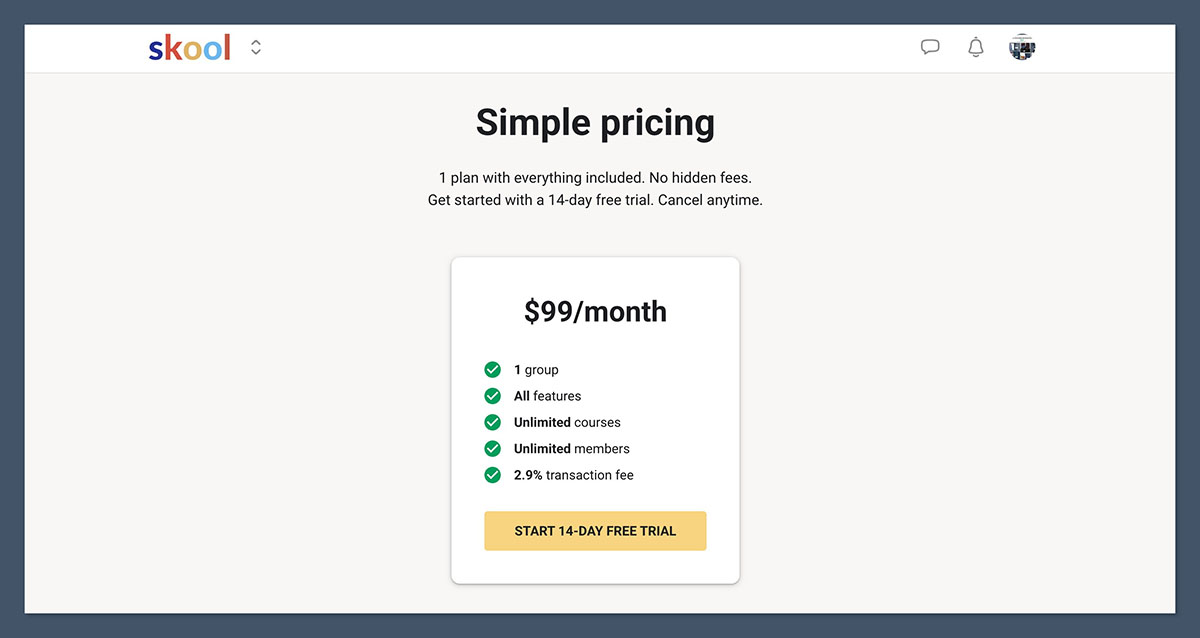
Unlike most platforms that offer multiple pricing tiers, free trials and upsells Skool has a single flat rate.
$99/month gets you:
- Unlimited members – No per-user charges.
- Unlimited courses & lessons – No content limits.
- Community forum – A Facebook Group alternative.
- Gamification & leaderboard – Keeps members engaged.
- Event calendar – Perfect for scheduling coaching calls.
- Full admin control – No restrictions on how you use it.
There’s no free plan, but Skool offers a 14 day free trial so you can test it before committing.
How It Compares to Other Platforms
- Kajabi – Starts at $149/month, limits users & courses, but offers more marketing automation.
- Teachable – Free plan available, but they take a cut of sales unless you upgrade.
- Circle – Starts at $49/month, but lacks built-in course hosting.
- Facebook Groups – Free, but no structured learning system, no ownership and full of distractions.
If you’re serious about selling courses, memberships or coaching Skool’s flat pricing is a major advantage.
Skool Review: Pros & Cons
After testing Skool here’s my honest breakdown:
Pros
- Super easy to use – No learning curve, anyone can set it up.
- Engagement friendly – Gamification makes members want to interact.
- Flat pricing – You don’t get punished for growing.
- No distractions – Unlike Facebook Groups where people get sucked into the algorithm.
- All in one – No need for extra tools, third party plugins or additional software.
Cons
- No free plan – If you’re just starting out $99/month might feel steep.
- Limited customization – You can’t heavily brand or change the layout.
- Not for massive course catalogs – If you sell 100+ courses something like Teachable or Kajabi might be a better fit.
Who Should Use Skool?
Skool is best for:
- Coaches & consultants – If you run paid masterminds or coaching groups this is perfect.
- Course creators – If you sell 1-10 courses Skool keeps things simple.
- Membership communities – If you want to charge monthly for access this is built for that.
It’s NOT for:
- Automated sales funnels – If you need advanced email automation Kajabi is better.
- Huge digital course catalogs – If you’re selling 100+ courses go with Teachable or Podia.
How Skool Helps with SEO & Organic Growth
One big downside of platforms like Facebook Groups is that your content doesn’t rank on Google. Skool fixes this by allowing public discussions to be indexed, so your community can drive organic traffic.
- More organic reach – Your content can be found on Google, unlike closed Facebook Groups.
- Better for branding – Your community is hosted on your own Skool platform, not Facebook’s ecosystem.
- SEO optimized discussions – The more engagement the more authority your site builds over time.
Skool Alternatives: Best Competitors Compared
While Skool is a solid all-in-one solution for courses and communities it’s not the only option out there. Depending on your needs one of these alternatives might be a better fit for your online business. Here’s how Skool stacks up against its main competitors:
1. Teachable – Best for Course Creators Who Want More Control Over Curriculum
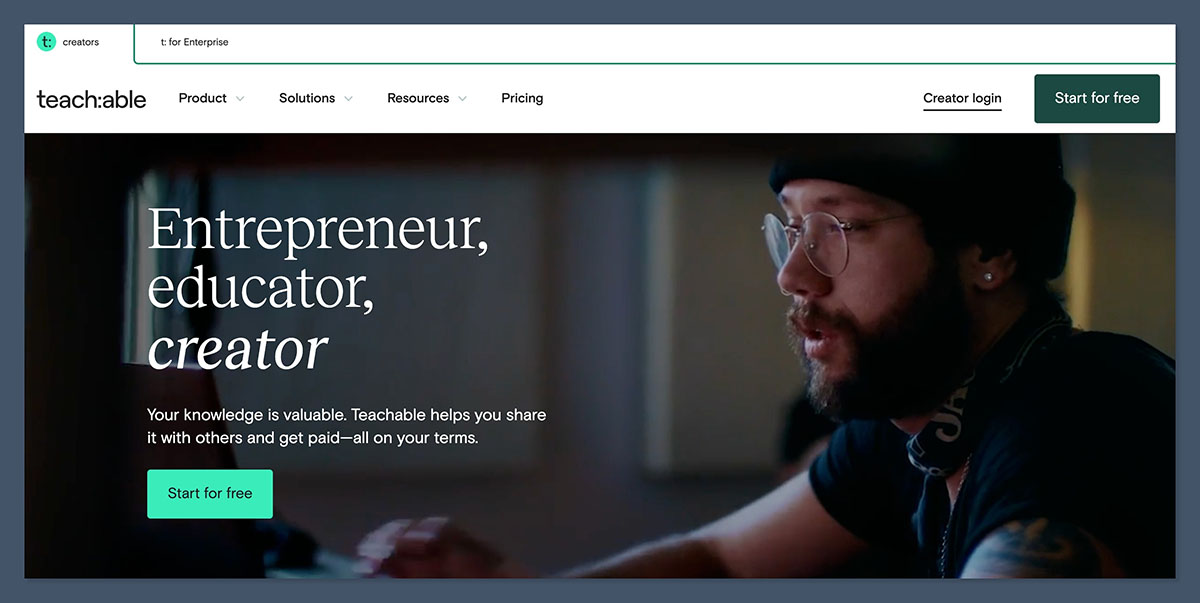
Teachable is one of the most popular platforms for selling online courses. It’s for creators who need heavily customization and total control over their course content.
Pros
- Flexible course creation – Quizzes, certificates, drip content.
- Integrated payment options – PayPal, Stripe, credit cards.
- Free plan available – Great for beginners but Teachable takes a transaction fee.
Cons
- Limited community features – No built-in forums or gamification like Skool.
- Higher fees as you scale – Takes a cut of your earnings unless you upgrade.
Best For:
Creators focused on deep, structured courses who don’t need a strong community component.
2. Disco – Best for Cohort-Based Learning and Live Courses
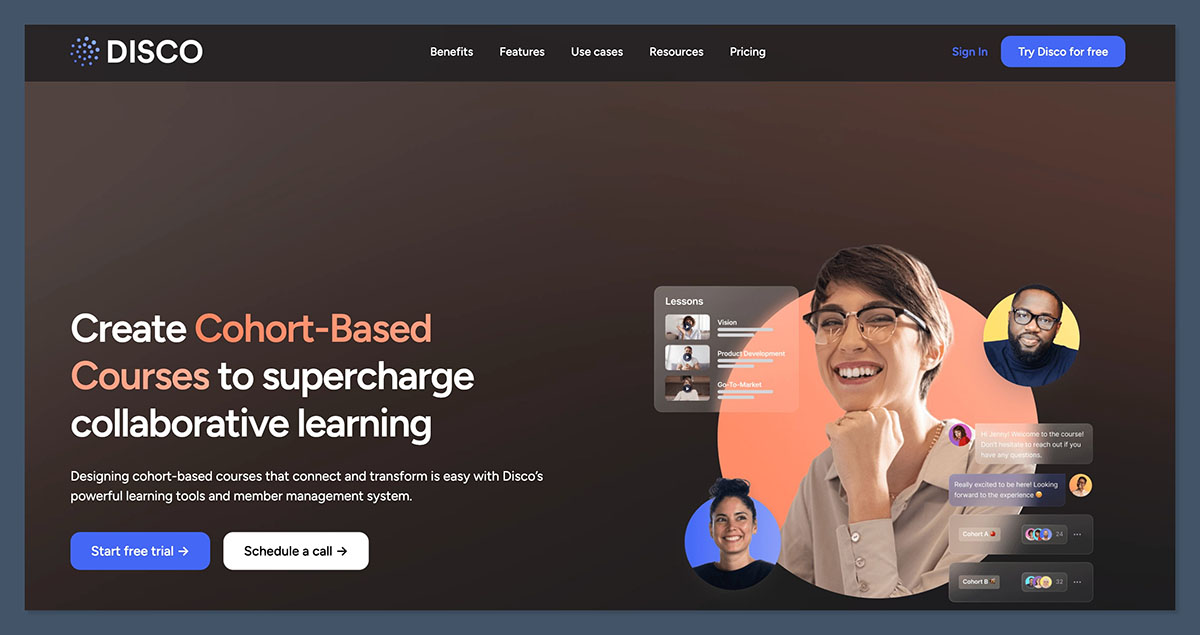
Disco is for cohort-based courses and live, interactive learning experiences. It’s perfect if you want to run programs with fixed start and end dates, focused on group interaction and live sessions.
Pros
- Cohort based learning – Great for group coaching or timed courses.
- Integrated live sessions – Zoom and other tools work seamlessly.
- Engagement tracking – See how active your students are.
Cons
- Not as effective for evergreen courses – Better for live, interactive models.
- Steep learning curve – More complicated to set up than Skool.
Best For:
Coaches and educators running live programs or group coaching sessions.
3. Mighty Networks – Strong Community Features with Course Integration
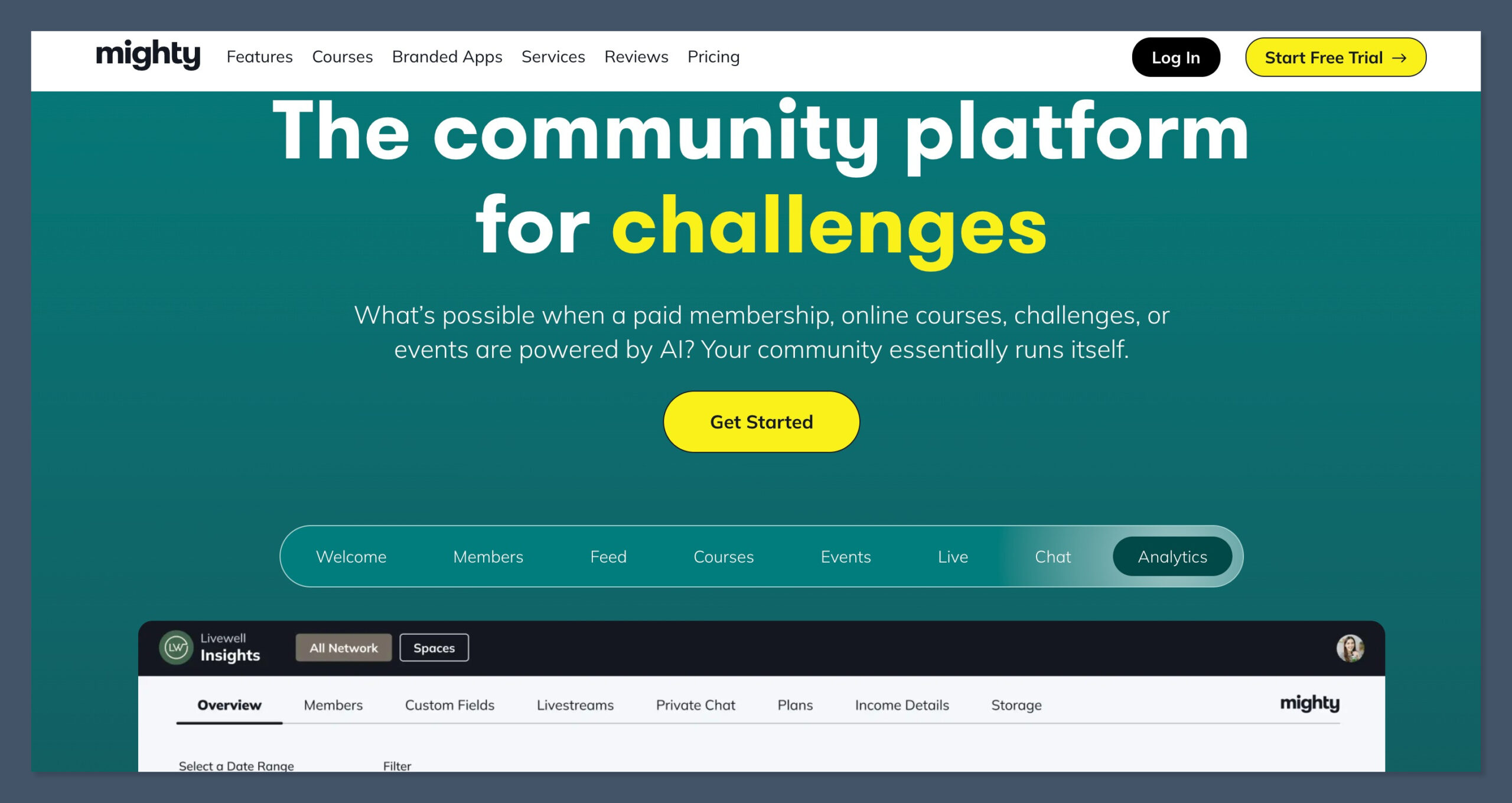
Mighty Networks is a community platform with course hosting so it’s a good Skool alternative for creators who want more customization.
Pros
- Customizable community spaces – Set up groups, topics and sub-communities.
- Mobile app included – Members can engage on the go.
- Monetization options – Charge for courses, memberships or premium content.
Cons
- Complicated pricing – Features are spread across multiple pricing tiers.
- Not as intuitive as Skool – Can be overwhelming for beginners.
Best For:
Community-first businesses looking for flexibility and strong community-building tools.
4. Kajabi – Best All-in-One Alternative for High-End Course Creators
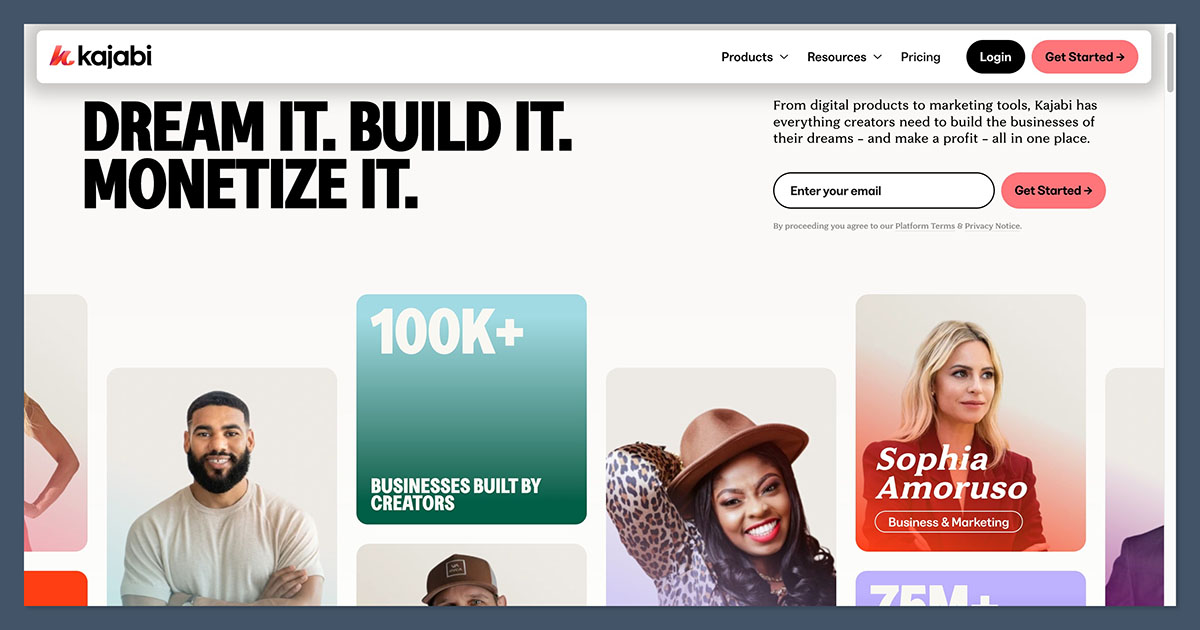
Kajabi is a premium all-in-one platform with powerful marketing tools so it’s perfect for creators who are willing to invest in automations, funnels and email marketing.
Pros
- Advanced marketing tools – Built in email marketing, funnels and landing pages.
- Comprehensive analytics – Track revenue, engagement and more.
- Top-notch support – 24/7 live chat and tons of resources.
Cons
- Expensive – Starts at $149, much higher than Skool.
- Overwhelming for beginners – Too many features can be daunting.
Best For:
High-end course creators and entrepreneurs who need advanced marketing and automation features.
5. Podia – Best Budget-Friendly Alternative for Selling Courses
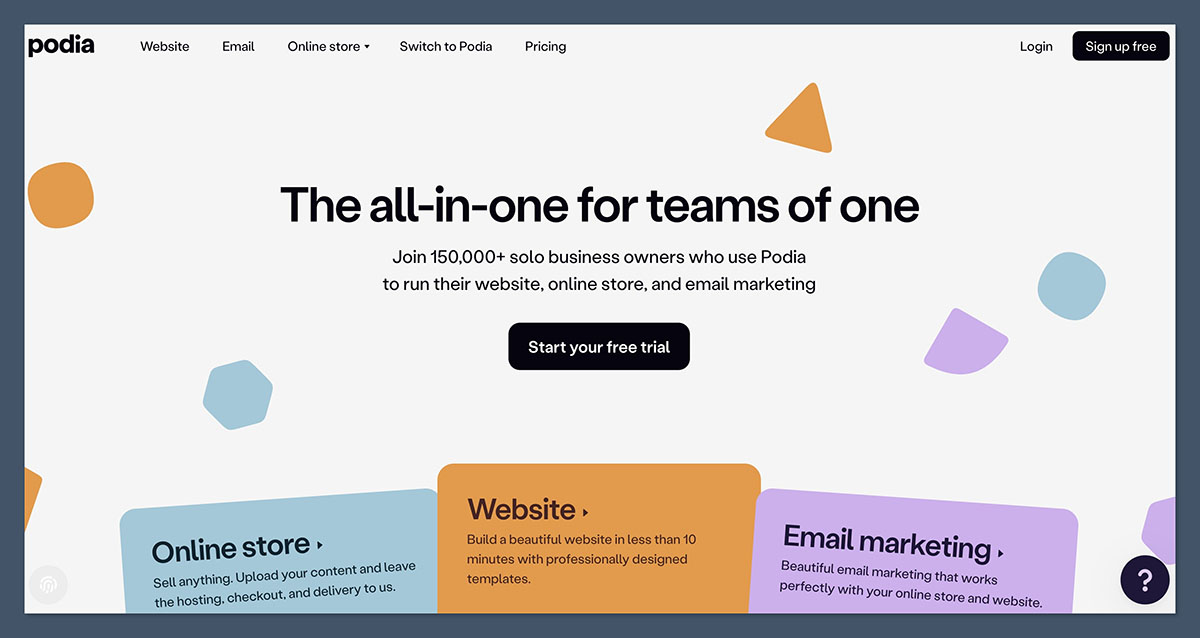
Podia is a budget friendly platform for creators who want to sell courses, memberships and digital downloads without breaking the bank.
Pros
- Cheap – Starts at just $9, perfect for beginners.
- All-in-one – Courses, memberships and digital products all in one place.
- Zero transaction fees – Keep 100% of your earnings.
Cons
- Limited community features – No forums or gamification like Skool.
- Basic design – Not as pretty or customizable as other platforms.
Best For:
Creators on a tight budget who want to sell digital products and courses.
6. Circle – Community Focused with Monetization Options
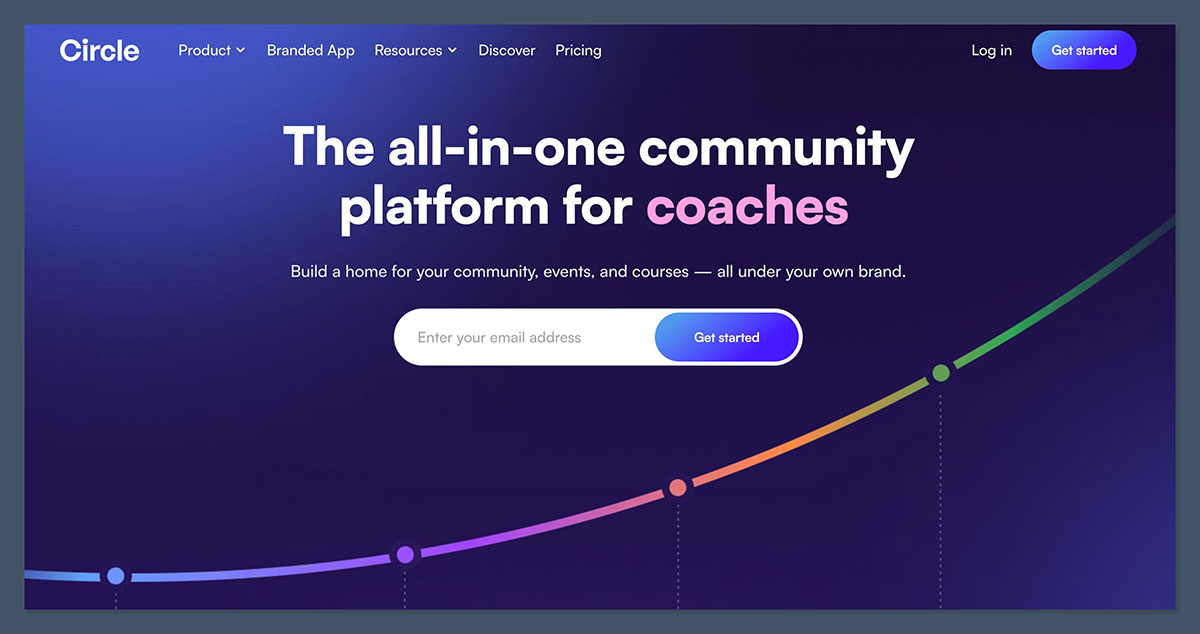
Circle is built for community-driven businesses, with features to monetize through memberships and subscriptions.
Pros
- Beautiful, simple design – Easy for members to use.
- Customizable spaces – Create groups or sub-communities.
- Monetization options – Charge for access, events or exclusive content.
Cons
- No course hosting – You’ll need a separate platform for courses.
- Limited gamification – Less interactive than Skool.
Best For:
Entrepreneurs and creators who need a standalone community platform without course hosting.
7. Facebook Groups – Free but Lacks Structured Learning Features
Facebook Groups are free and have a low barrier to entry but they come with big limitations.
Pros
- Free – No monthly fees.
- Huge user base – Easy to find and add new members.
- Simple to set up – No tech skills required.
Cons
- No control over the platform – Facebook controls your data and access.
- Distracting environment – Ads, notifications and the algorithm kill engagement.
- No structured courses – Hard to organize lessons or structured learning.
Best For:
Absolute beginners or those who want to test an idea without any upfront costs but not for serious monetization.
Final Thoughts: Is Skool Worth It?
After using Skool I’d say it’s 100% worth it for:
- Coaches & community builders who want a structured, engaging platform.
- Course creators who don’t need advanced automation and prefer a simple setup.
- Anyone tired of Facebook Groups and looking for an owned platform.
If you want to monetize your expertise, Skool makes it super simple. The flat pricing, gamification and all-in-one setup is one of the best community platforms I’ve used.
